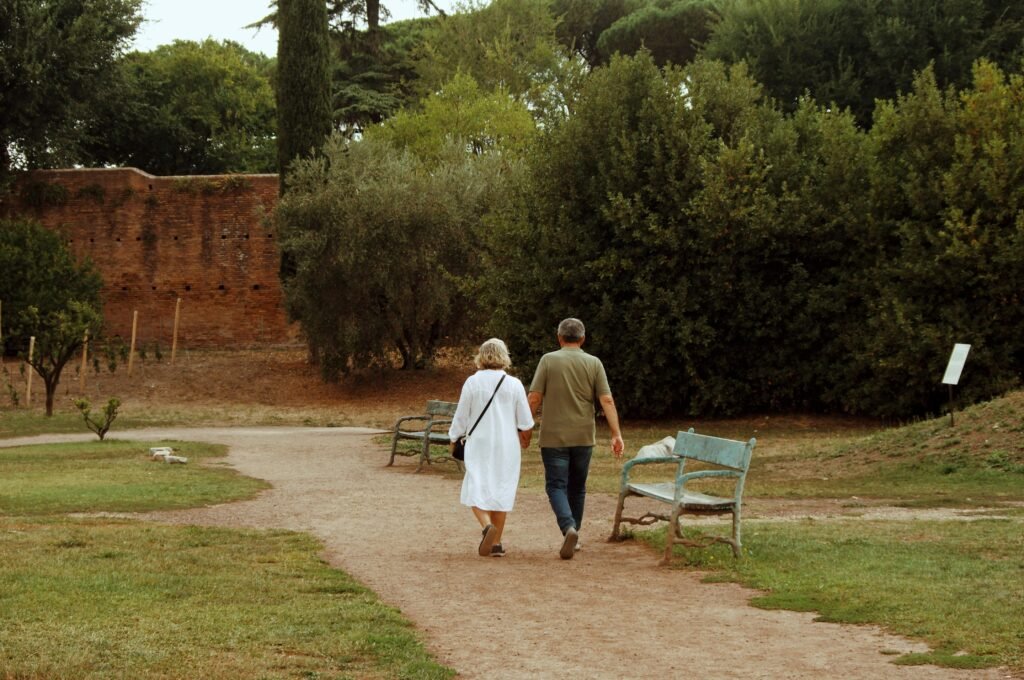Planning a trip from the USA to Italy? If you’re like me, you don’t just want to see Italy—you want to experience it like a local. But one thing many Americans wonder is how not to look American in Italy. The key is to travel respectfully and to embrace Italian customs so you don’t come across as the stereotypical tourist.
Throughout this blog, I will discuss what to wear, how to behave in restaurants, and what to avoid when on a trip to Italy. Thus, you can confidently blend in whether you’re exploring Rome, Venice, or the Amalfi Coast. You’ll also find tips specific to men, women, and even seasonal travel, like September or summer.
Why Avoiding the “American Look” in Italy Truly Matters
You might be wondering, “Is Italy friendly to Americans?” Absolutely—Italians are warm, welcoming, and often delighted to share their culture. But how you carry yourself as a visitor can significantly shape the kind of experience you have.
Looking overtly like a tourist—through loud behavior, casual dress, or ignoring local customs—can unintentionally send the wrong signal. It may lead to inflated prices, generic service, or being seen more as a customer than a guest. Additionally, it may increase your chances of becoming a victim of pickpocketing.
When you blend in, you don’t lose your identity. You just respect the flow of Italian life. If you dress thoughtfully, adopt a slower pace, and show genuine curiosity, you will often be met with warmth and authenticity. It indicates to them that you are not just sightseeing but actively engaged in their way of life.
How Not to Look American in Italy: Dress, Behavior & Cultural Cues
While traveling from the USA to Italy brings excitement, etiquette adjustments can take your experience from touristy to immersive. Whenever you wonder how to not look American in Italy, the answer lies in blending into their customs, fashion, and mannerisms.
Below I will discuss everything from what to wear and how to eat to what not to pack and how to behave—so you can move through Italy with confidence, not confusion.
Italy Dress Code: What to Wear and What to Avoid
When considering how to not look like a tourist in Italy, start with the wardrobe. Italians take pride in their appearance, and their style is polished, tailored, and intentional. Knowing “What is the Italian dress code?” will help you blend in effortlessly.
What to Wear in Italy to Not Look Like a Tourist Male
Men in Italy tend to favor clean lines, neutral palettes, and clothing that fits properly. Looking sharp doesn’t require a designer wardrobe—just attention to detail.
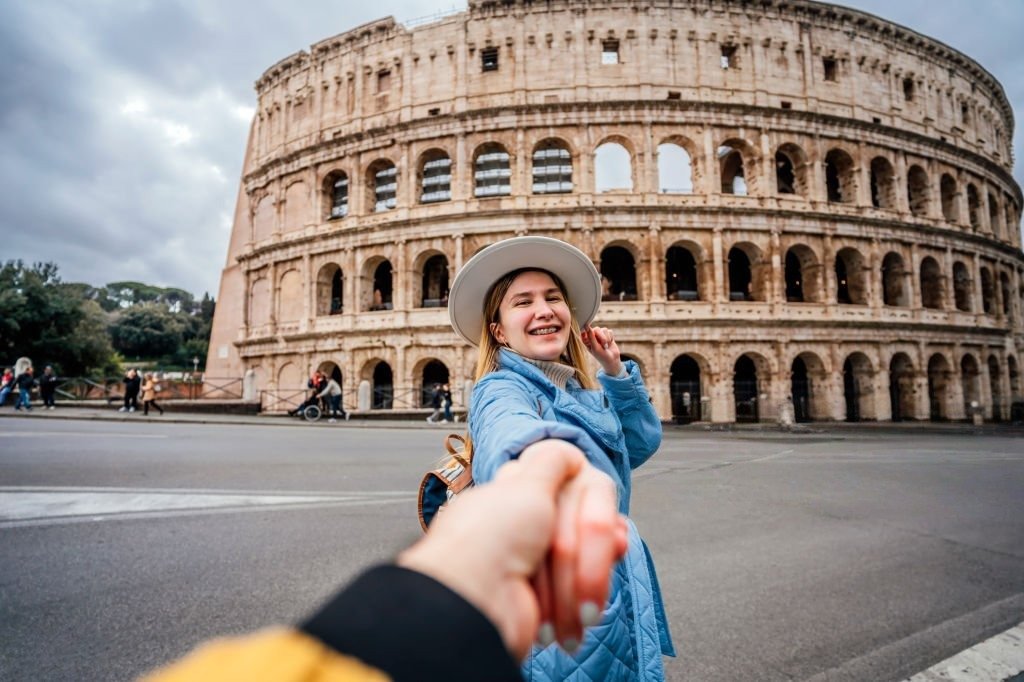
- Slim-fit jeans or tapered chinos: Are you wondering about “Is it okay to wear jeans in Italy?” The answer is yes, jeans are totally fine in Italy, as long as they’re not baggy, overly distressed, or ill-fitting.
- Neutral-toned polos or button-down shirts: Skip the loud graphics and opt for understated style.
- Lightweight blazers or unstructured linen jackets: Perfect for dinners or city exploration.
- Leather loafers or minimalist white sneakers: Clean footwear matters. Leave your gym shoes at home.
- Wristwatch and sunglasses: Small accessories go a long way in adding polish.
What to Wear in Italy to Not Look Like a Tourist Female
Italian women embrace elegance, even in their casual wear. For female travelers wondering how not to look like a tourist in Italy, consider wardrobe staples that are versatile, feminine, and sleek.
- Breezy midi skirts or tailored summer dresses: Great for warm weather while remaining stylish.
- Fitted blouses, tucked-in tops, or linen button-ups: Avoid oversized or overly sporty pieces.
- A lightweight scarf or sunglasses: Accessories elevate even simple outfits.
- Leather flats, ankle boots, or stylish sandals: Ditch the flip-flops. Opt for fashion-forward yet walkable shoes.
- Crossbody bags or small structured purses: Functional, secure, and stylish.
This look is ideal for blending in, whether you’re exploring Florence or heading out for an aperitivo in Naples.
What Not to Wear in Italy in Summer
Italy in summer is hot, but resist the urge to dress like you’re heading to a beach BBQ. Staying stylish in the heat is possible with the right materials and cuts.
Avoid the following items if you want to look less like a foreigner in Italy:
- Flip-flops or rubber sandals (unless you’re at the beach)
- Tank tops, athletic shorts, or activewear outside the gym
- Fanny packs, oversized backpacks, or visible money belts
- Baseball caps and graphic tees with large logos or slogans
- Bright neon colors or touristy prints
You might ask: Can a woman wear shorts in Italy? Technically yes—but opt for tailored styles in conservative lengths, especially if you’re visiting churches or dining out. Men, skip basketball shorts entirely. They scream “tourist.”
Italian Dining Etiquette: Eat Like a Local
Understanding Italian food etiquette is a key part of cultural immersion. Italians see dining as a slow, social experience—not a transaction. If you’re wondering how not to look like a tourist in Italy at the dinner table, respect for tradition goes a long way.
Essential Restaurant Etiquette in Italy:
- Wait to Be Seated: Unlike in the U.S., it’s considered impolite to seat yourself. Always wait to be acknowledged and shown to a table.
- Avoid Custom Orders: Don’t ask to split meals, request major substitutions, or expect doggy bags—especially in traditional or upscale restaurants. It’s seen as disrespectful to the chef’s culinary intention.
- Lower Your Voice: Italians appreciate lively conversation, but never at a volume that disrupts other tables. Keep your tone warm, not loud.
- Don’t Rush: Dining is leisurely. You’re expected to linger, not turn over a table. Meals may span hours—especially dinner.
- Tipping Is Modest: Gratuity is not obligatory. Locals may simply round up the bill or leave a few euros for excellent service.
- Ask for the Bill Politely: The check won’t be brought unless requested. Use the phrase “Il conto, per favore” with a smile.
Cultural “Must-Knows” at the Italian Table:
- No Cappuccino After Noon: Ordering one post-lunch is a clear tourist giveaway. Italians reserve milky coffee for breakfast.
- Don’t Put Cheese on Seafood: Asking for Parmesan on a seafood pasta is a culinary faux pas.
- Bread Is Eaten Plain: You won’t find olive oil or butter served with bread in Italy. It’s used to accompany the meal—not as a pre-dinner snack.
How to Not Look Like a Foreigner in Italy: Behavior & Body Language
Looking the part is just one piece of the puzzle—how you carry yourself in Italy is equally important. Italians prize subtlety, grace, and genuine respect in social interactions. Loud voices, exaggerated gestures, or inattentive behavior immediately mark a visitor as an outsider.
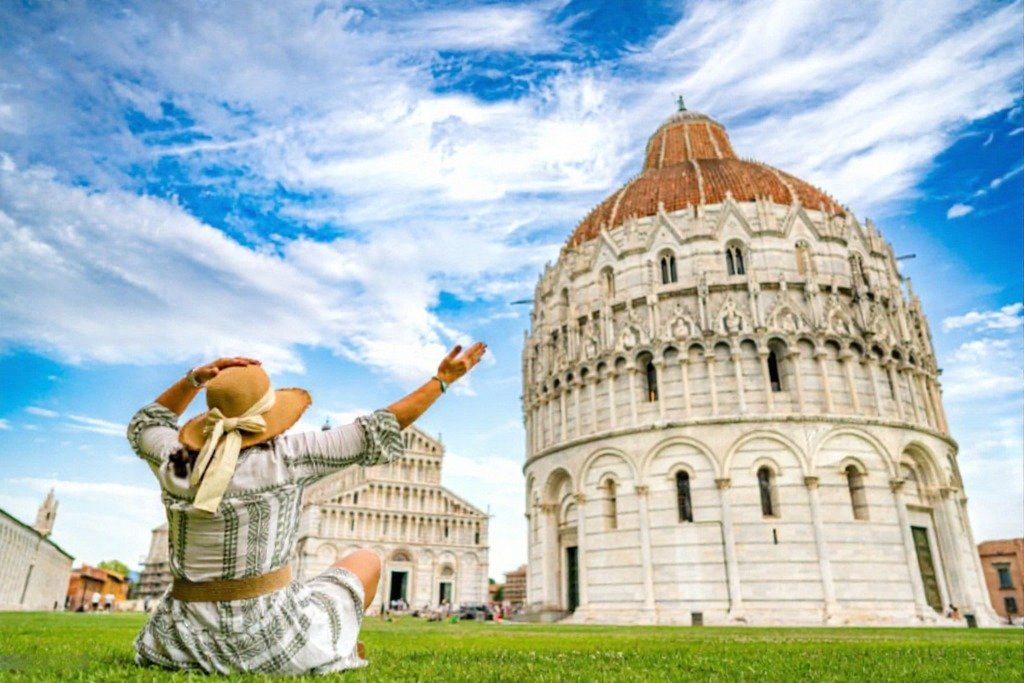
Avoid These Common Tourist Pitfalls:
- Speaking loudly indoors or in quiet settings
- Overusing broad or theatrical hand gestures
- Wearing backpacks inside restaurants or churches
- Eating while walking—Italians savor meals as a social event, not on the go
- Ignoring simple greetings like “Buongiorno” or “Buonasera”
What to Do Instead:
- Speak in a soft tone and listen attentively
- Be appropriately dressed when visiting religious sites, dining out, or shopping
- Send a warm greeting to shopkeepers, waitstaff, and strangers with a polite “Buongiorno” or “Grazie”
- Try to use basic Italian phrases to demonstrate respect and openness
- Let your body language be relaxed and deliberate rather than hurried or brash
The Italian Social Code:
You should embrace elegance in your demeanor, warmly greet others, and show curiosity about local customs. Don’t assume English is spoken everywhere or overlook simple social niceties like eye contact and saying “thank you.”
What Not to Pack for Italy: Travel Light, Travel Smart
Mastering how not to look American in Italy starts with your suitcase. The Italian traveler prioritizes quality over quantity and functional over flashy gear. Packing bulky or tourist-targeted items immediately makes you stand out.
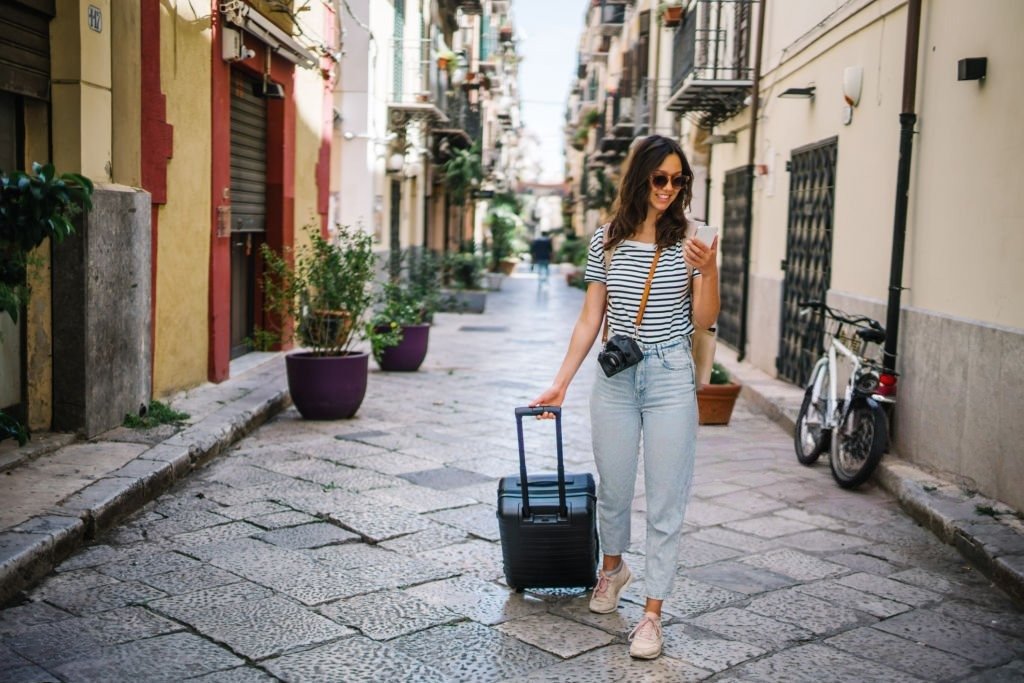
Avoid These Packing Pitfalls:
- Excessive activewear, unless you’re going to the gym or hiking in the countryside.
- Bulky, oversized backpacks are unsuitable for narrow cobblestone streets and crowded cafes.
- Multiple pairs of heavy shoes—choose polished, versatile footwear that will easily transition from day to evening.
- Overpacking on personal care products; Italian pharmacies offer a wide selection of essentials, so pack light.
- Unnecessary gadgets; one universal adapter and charger will suffice for most travelers.
Business Dress Code in Italy: Precision in Professionalism
When traveling for work, your attire speaks volumes before you say a word. Italian business culture, especially in hubs like Milan and Florence, demands a refined and tailored appearance reflecting seriousness and style.
Men’s Business Wardrobe
Tailored suits in muted shades, crisp button-downs, and polished leather shoes form the core. Accessories should be minimal; emphasis lies on impeccable fit and quality fabrics.
Women’s Professional Attire
Choose modest yet sophisticated dresses or skirt suits paired with closed-toe heels or elegant flats. Jewelry and bags should be understated, balancing professionalism with chic elegance.
Key Insight: Italian workplace fashion favors conservative yet stylish ensembles that communicate respect and confidence. When attending meetings, avoid flashy colors or overly casual pieces, and instead lean into classic, tailored silhouettes.
Social Etiquette in Italy: Do’s and Don’ts
Finally, to truly understand what is the social etiquette in Italy, remember this: Italians value respect, style, and human connection.
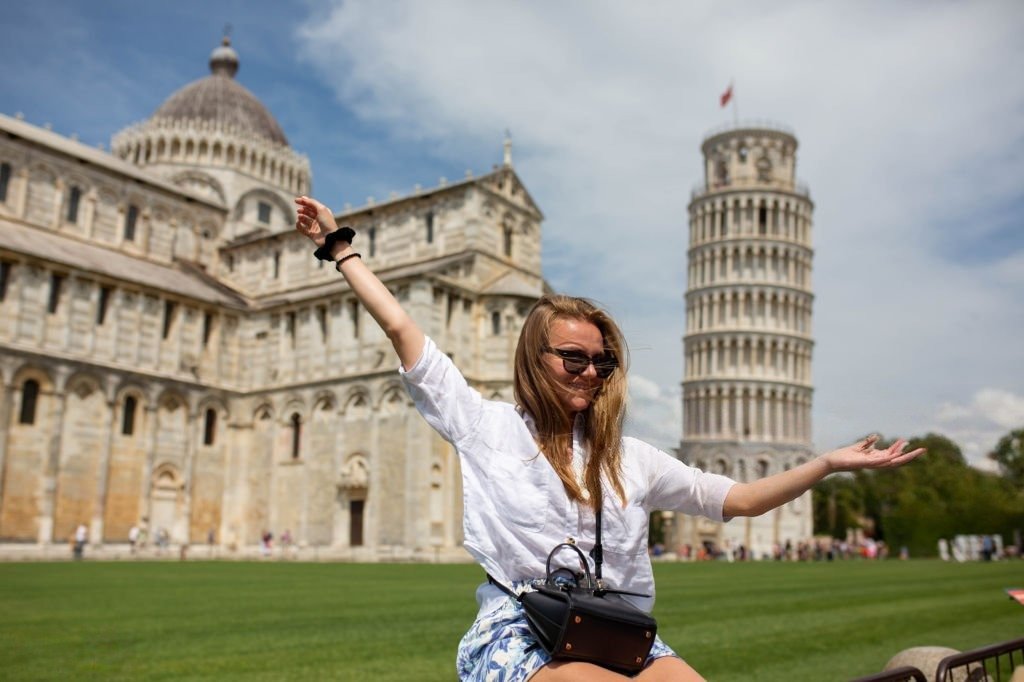
Do in Italy:
- Greet shopkeepers and café staff with a sincere “Buongiorno” or “Buonasera.”
- Dress thoughtfully even in casual environments—appearance matters deeply.
- Be punctual for formal gatherings or business appointments.
- Use cutlery properly, even for traditionally informal dishes when dining in refined settings.
Don’t in Italy:
- Enter religious sites in inappropriate attire, like sleeveless tops or shorts.
- Begin meals without a polite “Buon appetito”—a small gesture that resonates.
- Over-tip or expect American-style service norms; modest gratuities are customary.
- Misinterpret Italian directness as rudeness; warmth coupled with clear boundaries is the norm.
Whether visiting in the vibrant buzz of September or the calm of the off-season, embracing these social cues will help you weave seamlessly into the Italian rhythm, elevating your travel experience from tourist to welcomed guest.
I recommend watching the video:
To Wrap Up
If you’re serious about learning how not to look American in Italy, it starts with awareness. From what you wear and eat to how you walk and speak, each detail matters. It’s not about losing your identity—it’s about honoring theirs.
By embracing Italy’s social etiquette, fashion standards, and dining culture, you don’t just avoid looking like a tourist—you unlock a more meaningful, immersive travel experience. And trust me, the locals notice.
Frequently Asked Questions
Can you wear red in Italy?
Yes, you can, but with intention. Even though Italians like color, red looks best in elegant cuts and refined fabrics. Make sure you avoid neon colors or flashy logos and choose deeper pigments, like crimson or wine. If paired with neutral tones and clean silhouettes, red can feel both bold and effortlessly chic, exactly what Italians admire.
What to wear in Rome to not look like a tourist?
To blend in with Romans, think polished and purposeful. You can choose tailored outfits in neutral colors, stylish sneakers or loafers, and minimal accessories. Skip loud prints, athletic wear, or oversized bags to blend into Rome’s polished street style.
How not to look American in Italy from the USA?
Avoid athleisure, loud voices, and flashy logos. You should dress modestly, speak softly, and use Italian greetings like “Buongiorno” to show respect for the local culture and to avoid the tourist stereotype.
How not to look American in Italy in September?
You can dress in layers by wearing light jackets, neutral sweaters, and leather shoes. You should avoid shorts and graphic tees. During September, Italians transition into autumn by dressing seasonally and intentionally.
What shoes to wear in Italy to not look like a tourist?
Put on sleek, comfortable shoes such as leather sneakers, loafers, and ankle boots. Wear athletic shoes, flip-flops, or hiking sandals only when necessary – they instantly identify you as a tourist.




